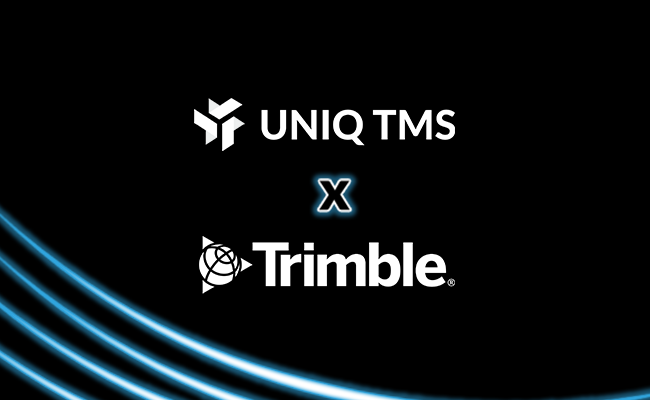5 Most Common Challenges in TMS Implementation and How to Overcome Them

Transportation Management Systems (TMS) play a crucial role in managing the complex supply chains of businesses today. However, implementing a TMS can be a daunting task that presents its fair share of challenges. In this article, we will explore the five most common challenges in TMS implementation and provide effective strategies to overcome them.
Understanding TMS Implementation
Before delving into the challenges, let’s first gain a clear understanding of what TMS implementation entails. TMS implementation refers to the process of integrating a transportation management system into an organization’s existing infrastructure. It involves configuring the system, migrating data, training personnel, and ensuring seamless integration with other systems.
When embarking on a TMS implementation journey, organizations must conduct a thorough analysis of their current transportation processes and identify areas that can be optimized through the implementation of a TMS. This analysis helps in setting clear objectives and expectations for the implementation process, ensuring that the chosen TMS solution aligns with the organization’s strategic goals and operational requirements.
What is TMS Implementation?
TMS implementation is the process of deploying a transportation management system to streamline and optimize logistical operations. It involves assessing the organization’s needs, selecting the appropriate TMS solution, and customizing it to meet specific business requirements. Successful TMS implementation can enhance visibility, improve efficiency, and reduce transportation costs.
Furthermore, TMS implementation often involves collaboration with various stakeholders within the organization, including transportation managers, IT personnel, warehouse staff, and external partners such as carriers and suppliers. Effective communication and cross-functional teamwork are essential for ensuring a smooth and successful implementation process that meets the needs of all involved parties.
The Importance of TMS in Supply Chain Management
A robust TMS is a vital tool in managing the complex supply chains of modern businesses. It offers real-time visibility into shipments, optimizes route planning, streamlines freight management, and facilitates seamless collaboration across the supply chain. By implementing a TMS, organizations can gain a competitive edge by improving customer service, reducing transportation costs, and enhancing operational efficiency.
Moreover, the data and analytics capabilities of a TMS provide valuable insights that can drive continuous improvement in supply chain performance. By leveraging the data generated by the TMS, organizations can identify trends, monitor key performance indicators, and make informed decisions to optimize their transportation processes and enhance overall supply chain resilience.
Identifying the Challenges in TMS Implementation
Implementing a Transportation Management System (TMS) comes with its fair share of challenges. It’s crucial to identify these challenges in order to develop effective strategies to overcome them. Let’s explore the most common hurdles faced during TMS implementation.
Technical Difficulties in TMS Implementation
One of the primary challenges organizations face during TMS implementation is dealing with technical complexities. Integrating a new system into an existing IT infrastructure can cause compatibility issues, data migration problems, and software integration hiccups. It’s crucial to work closely with IT teams and TMS providers to ensure a smooth transition.
For example, during the integration process, organizations may encounter issues with data migration, where transferring large amounts of data from the old system to the new TMS can be time-consuming and prone to errors. Additionally, compatibility issues between the TMS and existing software applications may require custom development or configuration to ensure seamless functionality.
Regular testing, training, and diligent troubleshooting can help address technical difficulties. By conducting thorough testing and providing comprehensive training to employees, organizations can minimize the impact of technical challenges and ensure a successful TMS implementation.
Budget Constraints and Cost Overruns
TMS implementation can be a significant investment for organizations, especially for those with limited budgets. Budget constraints and cost overruns often pose a challenge, as organizations strive to keep implementation costs within acceptable limits.
For instance, organizations may face unexpected costs during the implementation process, such as additional hardware requirements or customization needs. These unforeseen expenses can lead to budget overruns and put strain on financial resources.
To overcome this challenge, careful cost analysis, realistic budgeting, and thorough vendor evaluation are key. By conducting a detailed cost analysis and considering all potential expenses, organizations can create a realistic budget that accounts for unforeseen costs. Negotiating favorable payment terms and exploring cloud-based TMS solutions can also help mitigate financial hurdles.
Lack of Skilled Personnel
Another common hurdle in TMS implementation is the lack of skilled personnel to manage and operate the system effectively. Implementing a TMS requires personnel with technical expertise, supply chain knowledge, and project management skills.
For example, organizations may struggle to find employees who are well-versed in TMS functionalities and can effectively utilize the system to optimize transportation operations. This lack of skilled personnel can hinder the successful implementation and utilization of the TMS.
To overcome this challenge, organizations should invest in training and development programs that upskill existing staff. By providing comprehensive training on TMS functionalities and offering opportunities for professional growth, organizations can equip their employees with the necessary skills to effectively manage the system. Additionally, consider hiring specialized consultants or partnering with TMS service providers to bridge the skills gap and ensure a smooth implementation process.
Resistance to Change in the Organization
Change is often met with resistance, and TMS implementation is no exception. Some employees may be hesitant to embrace new technologies, workflows, and processes.
For instance, employees who have been accustomed to manual processes may resist the implementation of a TMS, fearing job displacement or increased workload. Overcoming resistance to change requires effective change management strategies, clear communication, and employee engagement.
Involving employees in the TMS implementation process, highlighting the benefits, and offering training and support can help alleviate concerns and foster smooth adoption. By addressing employee concerns, providing ongoing support, and emphasizing the positive impact of the TMS on their work, organizations can encourage a culture of acceptance and facilitate a successful implementation.
Integration Issues with Existing Systems
Integrating a new TMS with existing systems, such as Enterprise Resource Planning (ERP) or warehouse management systems, can present a significant challenge. Incompatibility issues, data synchronization problems, and process integration complexities can hinder seamless operations.
For example, organizations may encounter difficulties in synchronizing data between the TMS and other systems, leading to discrepancies or delays in information exchange. Additionally, process integration complexities may arise when trying to align workflows between different systems, causing inefficiencies and disruptions.
To overcome this challenge, organizations should conduct thorough system assessments, seek support from TMS providers, and engage with IT teams to ensure seamless integration through robust Application Programming Interfaces (APIs) and data mapping. By collaborating closely with IT teams and leveraging the expertise of TMS providers, organizations can address integration issues and ensure smooth operations across all systems.
Strategies to Overcome TMS Implementation Challenges
Addressing Technical Issues
To tackle technical difficulties, it is crucial to establish a partnership between IT teams, TMS providers, and implementation teams. Regular testing, system validation, and continuous monitoring can help identify and address technical issues promptly. Establishing a comprehensive support system and fostering collaboration can go a long way in ensuring successful TMS implementation.
When it comes to addressing technical issues during TMS implementation, it is important to recognize the complexity of modern supply chain systems. These systems often involve a multitude of interconnected components, ranging from warehouse management systems to transportation networks. Therefore, it is essential to have a thorough understanding of the entire ecosystem and how the TMS fits into it.
One effective strategy is to conduct a thorough system analysis before implementation. This analysis should include a comprehensive review of existing infrastructure, software compatibility, and data integration requirements. By conducting a detailed assessment, organizations can proactively identify potential technical challenges and develop mitigation plans accordingly.
Managing Budget and Cost Effectively
To manage budget constraints and cost overruns effectively, organizations should conduct a detailed cost-benefit analysis. This will help in determining the most cost-effective TMS solution while considering long-term benefits. Negotiating flexible payment terms, exploring subscription-based models, and leveraging cloud-based solutions can also help organizations align their budget with their TMS implementation requirements.
When it comes to managing the budget for TMS implementation, organizations should also consider the potential return on investment (ROI) that a well-implemented TMS can provide. By streamlining supply chain processes, reducing transportation costs, and improving overall efficiency, a TMS can generate significant cost savings in the long run. It is important to take a holistic view of the financial impact and consider the potential benefits beyond the initial implementation phase.
Furthermore, organizations should also explore potential funding options and grants that may be available for TMS implementation. Many governments and organizations offer financial support for initiatives that promote supply chain optimization and sustainability. By tapping into these resources, organizations can alleviate some of the financial burdens associated with TMS implementation.
Training and Developing Skilled Personnel
To mitigate the challenge of a skills gap, organizations should invest in comprehensive training programs. Providing employees with access to training resources, certifications, and professional development opportunities will help them acquire the necessary skills to successfully operate and manage the TMS. Additionally, establishing cross-functional teams and fostering knowledge sharing within the organization can enhance the overall proficiency in utilizing the TMS effectively.
When it comes to training and developing skilled personnel for TMS implementation, organizations should take a proactive approach. This includes identifying key individuals who will be responsible for TMS operation and management and providing them with specialized training. These individuals can then act as internal champions, guiding the rest of the organization through the implementation process and ensuring smooth adoption.
Furthermore, organizations should consider partnering with external consultants or experts who specialize in TMS implementation. These professionals can provide valuable insights, best practices, and training programs tailored to the organization’s specific needs. By leveraging external expertise, organizations can accelerate the learning curve and ensure a successful transition to the new TMS.
Encouraging Organizational Change
To overcome resistance to change, organizations should actively involve employees in the implementation process. Conducting informative workshops, outlining the benefits of the TMS, and highlighting success stories can help create buy-in and enthusiasm among employees. Furthermore, providing ongoing support, addressing concerns, and recognizing and rewarding employees for their efforts can promote a positive organizational culture that embraces change.
When it comes to encouraging organizational change during TMS implementation, it is important to foster a sense of ownership and empowerment among employees. This can be achieved by involving them in decision-making processes, soliciting their feedback, and actively addressing their concerns. By creating a collaborative environment, organizations can ensure that employees feel valued and engaged throughout the implementation journey.
Additionally, organizations should communicate the benefits of the TMS in a clear and compelling manner. This includes highlighting how the TMS will streamline processes, improve efficiency, and ultimately contribute to the organization’s success. By articulating a compelling vision and demonstrating the positive impact of the TMS, organizations can inspire employees to embrace change and actively contribute to its successful implementation.
Ensuring Smooth Integration with Existing Systems
To overcome integration challenges, organizations should involve IT teams and TMS providers in the early planning stages. Clearly defining integration requirements, mapping data streams, and conducting rigorous testing can help ensure seamless integration. Utilizing standardized APIs and working closely with system integration experts can help address compatibility issues and ensure data flows smoothly between the TMS and other existing systems.
When it comes to ensuring smooth integration with existing systems, organizations should prioritize collaboration and open communication between all stakeholders involved. This includes establishing clear lines of communication, conducting regular meetings, and sharing progress updates. By fostering a collaborative environment, organizations can proactively address integration challenges and ensure that all systems work harmoniously together.
Furthermore, organizations should consider conducting pilot tests or proof-of-concept projects before full-scale implementation. This allows for early identification of any integration issues and provides an opportunity to refine the integration process. By taking a phased approach and gradually integrating different components, organizations can minimize disruption and ensure a smooth transition to the new TMS.
Implementing a TMS can present various challenges, but with the right strategies in place, organizations can overcome these hurdles and reap the benefits of enhanced supply chain management. By understanding the challenges, addressing them proactively, and fostering a culture of continuous improvement, organizations can successfully implement a TMS and optimize their logistical operations for long-term success.
Ready to Transform Your Transportation Management?
Discover how Uniq TMS can streamline your logistics operations, enhance efficiency, and boost your bottom line. Click here to learn more and explore our innovative solutions designed to meet your unique transportation needs.

